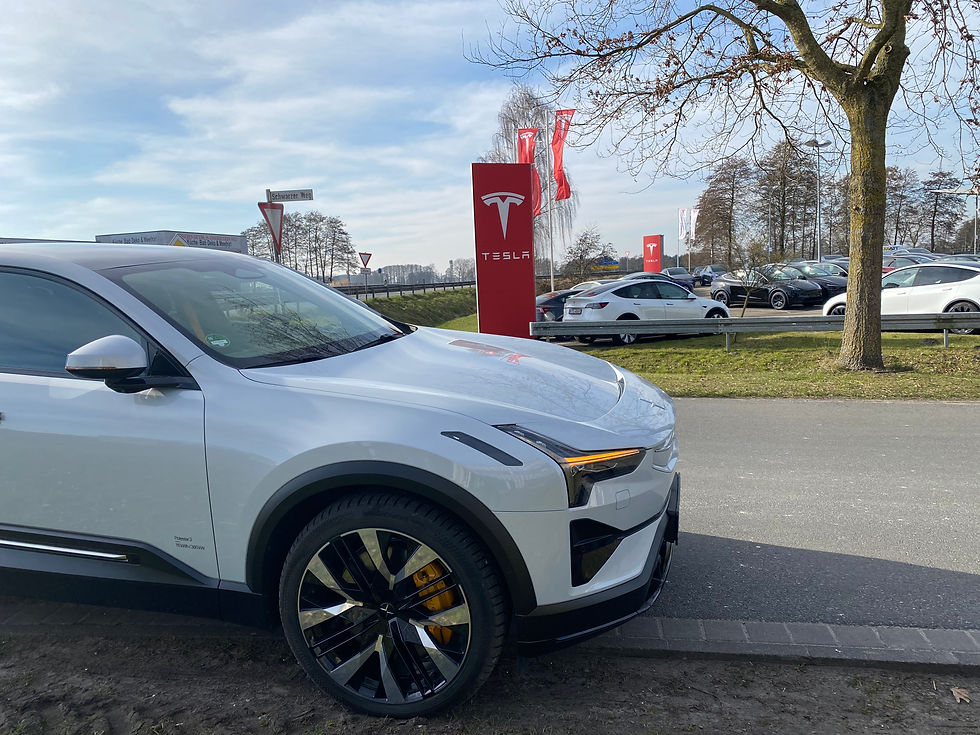European EV market slowly increasing its charge
- Matthias Schmidt

- Oct 23, 2019
- 3 min read
Updated: Mar 3, 2020
Outwardly impressive with a cumulative growth rate of 90 percent during the opening three quarters of the year, the West European pure electric BEV market remains distorted by Tesla's domination.
While the European Tesla Model 3 introduction is boosting the market, accounting for every fourth BEV (battery electric vehicle) sold in the region during the opening 9-months of 2019 – 62,900 units – according to exclusive data from the monthly published SMA Data European Electric Car Report, other manufacturers are highly likely continuing to artificially slow their plug-in product offensive. In an attempt to shift demand for their electric models to 2020 to meet EU CO2 fleet targets, and consequently acting like a parachute – braking the market growth – the distorted picture we see today remains. If the Tesla Model 3 is taken out of the equation, the growth rate is more than halved from 89.8 percent during the opening 9-months of the year to 41.6 percent compared to the same period last year, this report identifies. This suggests there is still a lot of suppressed growth in the current market, likely to be turned into new registrations from 2020, and likewise in 2021, when 100 percent of the fleet is required to meet a 95g/km weight based average fleet emissions target (in 2020 the worst 5 percent can be omitted from the total), with the help of additional tools such as doubling counting of BEVs in the opening year, and so-called eco innovation credits also helping.
West European BEV passenger car market growth rate, now triple that as seen in China
On a global comparison, Western Europe's BEV passenger car market saw its growth rate during the opening 9-months triple that seen in China (+27.8%) according to CAAM data – impacted by a fall in government subsides for BEVs implemented during Q2 – while slow year-on-year US growth (+11.8%) was more than half that of China's according to this report's partially estimated data – impacted by high volumes last year following the Model 3 introduction. This resulted in a 21 percent negative growth rate in the month of September compared to the same month last year. Although there were two fewer working days this year, the BEV market still fell close on twice as fast as the US Light Vehicle market according to estimates.
In Japan, the first month of Tesla Model 3 deliveries, amounting to 250 units – estimated by this report on account of official JAIA and JADA data – wasn't enough to stop the Japanese pure EV market falling from last year's January-September levels by 22 percent, partially explained by relatively high first year deliveries of the Nissan Leaf last year. In Japan the Leaf accounted for 95 percent of the total Japanese pure electric new passenger car registrations during the January to September period in question. The four major global passenger car markets – Western Europe, USA, China and Japan – monitored by this report, saw combined BEV volumes surpass one million units during the opening three quarters of 2019. New BEV registrations amounted to 1.13 million units, recording a year-on-year rise of 33 percent, or an increase of 281,000 units.
The main growth catalyst came from West European growth – remaining on target for an annual volume level of around 340,000 units, with 12-month rolling totals between October 2018 and September 2019 currently reaching 314,000 units according to this report's exclusive data.
For more comment contact me directly. Details in contacts



Comments